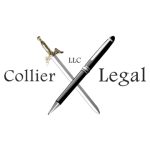What Is Trademark Fair Use?
Introduction
When navigating trademark law, understanding the concept of trademark fair use is essential, especially for businesses and creators to avoid trademark infringement. Unlike copyright fair use, trademark fair use is more limited, but it still provides important legal protections in specific contexts.
Is There Fair Use for Trademarks?
Yes, but it is narrower than copyright fair use and more dependent on context. Courts focus heavily on consumer perception and likelihood of confusion. While trademark fair use allows limited, lawful use of another’s mark, it must be done carefully and without implying endorsement.
If you are unsure whether your use qualifies as fair, consult a trademark attorney. Missteps can lead to costly litigation.
What Is Trademark Fair Use?
Trademark fair use refers to situations where someone uses a trademark without permission but without infringing the mark owner’s rights. Fair use is not a blanket defense but a narrowly tailored doctrine allowing use in specific, limited contexts recognized under U.S. trademark law.
The Lanham Act, which governs trademarks in the United States, does not use the phrase “fair use” broadly, but § 33(b)(4) of the Lanham Act (15 U.S.C. § 1115(b)(4)) provides a statutory basis for descriptive fair use.
Descriptive Fair Use
Descriptive fair use occurs when a trademarked term is used in its ordinary, descriptive sense, rather than as a source identifier. For example, using the word “sweet” to describe a candy product, even if “Sweet” is a registered mark for another brand, may be permissible if used descriptively.
Legal Basis
15 U.S.C. § 1115(b)(4) allows use “otherwise than as a mark… of a term or device which is descriptive of and used fairly and in good faith only to describe the goods or services.”
KP Permanent Make-Up, Inc. v. Lasting Impression I, Inc., 543 U.S. 111 (2004) clarified that fair use does not require the user to prove no likelihood of confusion.
Example
A company selling fasteners can refer to their product as “rust-resistant” even if “Rust Resistant” is part of a registered mark, so long as the term is used descriptively.
Nominative Fair Use
Nominative fair use allows a third party to refer to a trademarked brand when identifying the brand’s product or service, particularly when there is no other practical way to refer to it.
Legal Basis
Nominative fair use was established in New Kids on the Block v. News America Publishing, Inc., 971 F.2d 302 (9th Cir. 1992) and later affirmed in other circuits. The use must meet three key criteria:
The product or service must not be readily identifiable without using the trademark.
Only as much of the mark as necessary is used.
The use does not imply sponsorship or endorsement.
Example
A computer repair shop stating it repairs “Apple® laptops” is likely engaging in nominative fair use.
Other Fair Uses of Trademarks
Certain expressive and comparative uses of trademarks are also protected under First Amendment and fair competition principles:
1. Commentary and Criticism
Using a trademark in reviews, op-eds, or other commentary is generally permitted, so long as it’s not misleading. This includes parodies and satire. For example, a satirical cartoon referencing McDonald’s does not infringe if it clearly isn’t affiliated.
2. News Reporting
Journalists may use trademarks when reporting factual information. For example, a tech journalist referencing “Meta’s latest AI tools” is protected.
3. Comparative Advertising
Businesses may reference a competitor’s trademark to make truthful claims, provided it doesn’t deceive or confuse consumers. This is allowed under 15 U.S.C. § 1125(a).
Note: Commercial comparative advertising has limits and is more scrutinized than non-commercial speech.
Key Considerations for Trademark Fair Use
Courts evaluate several factors when determining whether a use qualifies as trademark fair use:
1. Good Faith
The use must not be intended to capitalize on the goodwill of the trademark owner. Bad faith, such as intentionally copying brand elements, undermines the defense.
2. Not Used as a Trademark
Fair use must involve use “otherwise than as a mark” (i.e., not to indicate source or brand identity). Decorative or prominent use may negate the defense.
3. Legitimate Purpose
Courts will assess whether the use has a clear, lawful purpose, such as describing products, comparing features, or identifying the origin of a product or service.
Conclusion
Trademark fair use provides important protections for those who use marks descriptively, referentially, or for legitimate commentary and comparison. Whether invoking descriptive or nominative fair use, the key is to act in good faith, avoid implying sponsorship, and use the mark solely for its intended informational or comparative purpose. While the boundaries can be nuanced, understanding the legal framework helps businesses and creators navigate risk responsibly. When in doubt, seeking legal guidance ensures your use stays on the right side of the law.

About
Attorney Collier started his own law firm straight out of law school and has been practicing law in Ohio for 5+ years. During that time, Joe focused on business law and litigation, gaining some exposure to intellectual property law. While running his firm in 2021, Joe decided to go back to school and get his patent license. Since then, Attorney Collier has been focusing on protecting innovators and entrepreneurs through his expertise in intellectual property and business law.

